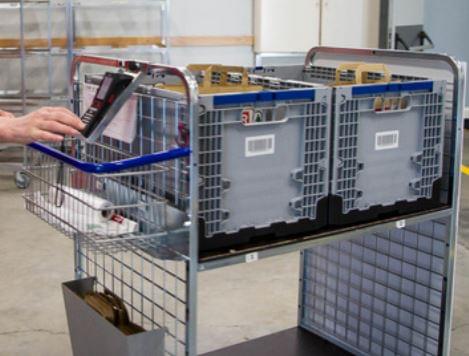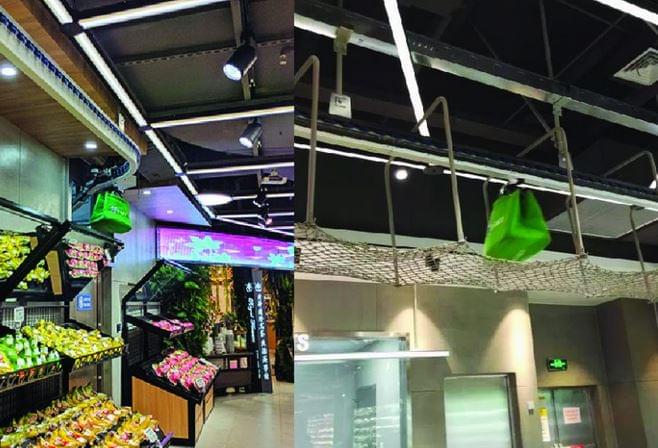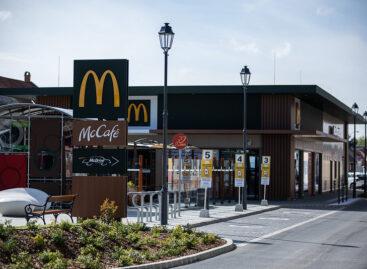Pandemic highlights the limits of store-based online fulfillment
The huge growth in demand for online grocery shopping services driven by the coronavirus is poised to redefine the supermarket business’ approach to e-commerce. While before the “stay home” provisions, it was enough to hire employees to collect goods in traditional sales outlets to fulfill online orders, in the present situation, increasing their number can no longer keep pace with the increased demands.

Colorful sales spaces
Experts believe that the food retail needs to undergo a paradigm shift in terms of online activity. This pressure hung in the air before the coronavirus, it was also known from Asian videos and exhibitions, but now it is coming with coercive force.
Most traditional retail food retailers use their existing stores and warehouses to collect online orders and start shipping. The problem with this is that sales spaces around five to ten thousand square feet were not invented for this. The viewing experience shopper likes wide lines, exciting promotions, eye-catching lights, scents, and impulse effects. Pickers, on the other hand, would need efficient, transparent systems and automated solutions. During the weeks of panic shopping, it was well observed that shoppers and pickers in these hypermarkets competed for quarantine products.
Another setback from the online shopper’s side is that when you place an order, you can never be sure exactly what you’ll get from your order. This is because the goods collectors can choose from the on shelves stocks, which are different at the moment of ordering and collection. There is no software that could reserve the last packet of yeast or flour in the sales area, as it is still uncertain which staff member, exactly when, from which shelf, what will be put into the online ordering package.
Transformed stores, online hubs
People collecting goods find an average of 20-30 items in an hour and put them in their trolley in a hypermarket. 350 items are assembled in the same amount of time in an automated, directly designed warehouse with a robotic solution. The speed and efficiency are spectacular, yet the bases themselves are unsuitable for normal shopping. Several chain stores around the world are transforming low-traffic stores, warehouses into such online hubs or building a modern hub directly for this purpose. Webshop platforms are also being transformed, and from these backgrounds, visible and reliable feedback on the ordered goods can be given based on stock data.

The other trend is that human or robotic picking is spectacularly put into the sales area. It can even be part of the purchase to order routine items from a kiosk in the sales area, buy the more delicate poduce and delicacies yourself, and then wait for the other products in a coffee shop in the sales area, which are put together by a human, robot or automated system. In the hybrid stores created in this way, the emphasis is on displaying the visual categories as attention attracting as possible and providing onpremise consumption places . And routine categories are incorporated into an efficient warehousing system that supports sorting in the background.
Every day new technology, new concept is born. Several statements have come to light that food retailers are shifting resources from these increased revenues from the pandemic and the framework for business renovations to these developments.
Ildikó Kátai
Related news
Efficiency, AI and sustainability: MBH Bank and MEGOSZ work together for the development of the agricultural machinery market
MBH Bank and the National Association of Field Machine Manufacturers…
Read more >Temu also affects domestic online retail
Temu has exploded the online commerce market and is present…
Read more >Az élelmiszeripar technológiai támasza a Siemens
„Érdemes valamennyi piaci szereplőnek áttekintenie folyamatait, gépeit, berendezéseit, és a…
Read more >Related news
The “Promotion of the Year 2024” awards were presented
This year, the “Promotion of the Year 2024” competition was…
Read more >Waves in the company trend – the changing faces of liquidations and company formations
Even with decreasing terminations, decreasing numbers of companies in the…
Read more >The first McDonald’s restaurant in Esztergom has opened
The first McDonald’s restaurant in the city of Esztergom opened…
Read more >







